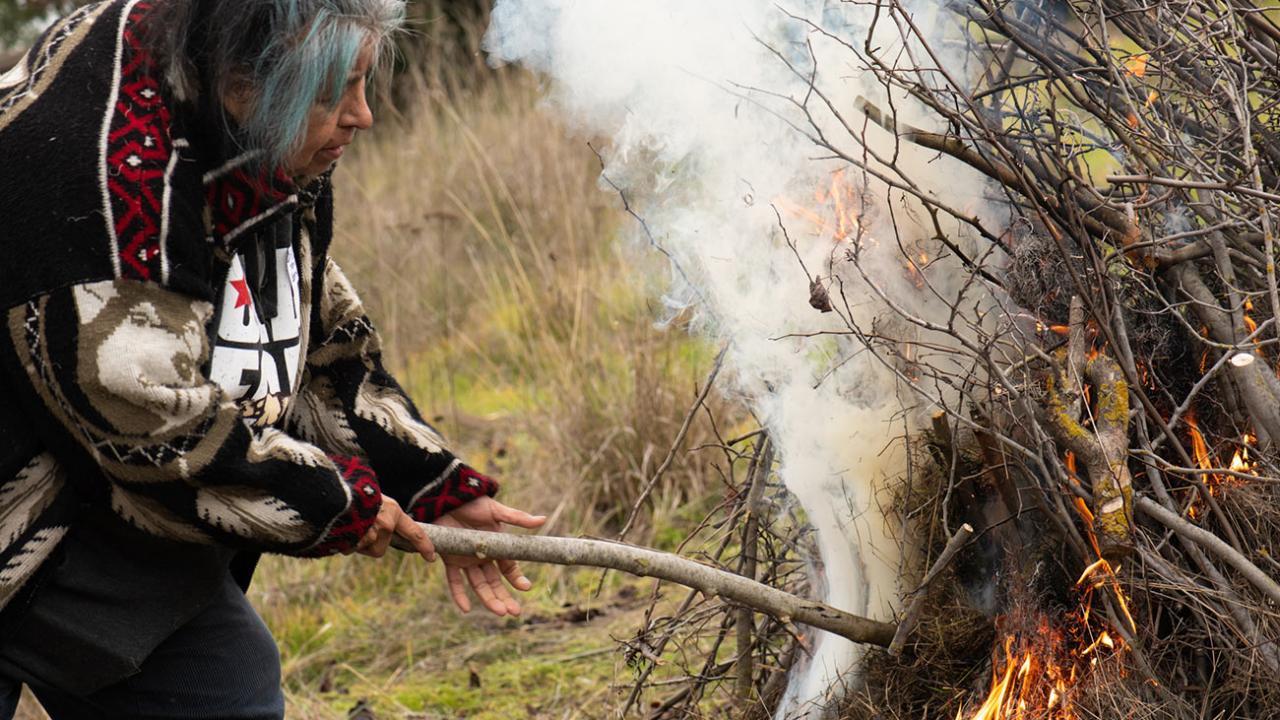This blog highlights and summarizes an initial article by Samantha Swank, a Linguistics and Spanish major at UC Davis. Read the full article here.
Fire is a natural part of the California ecosystem, but you wouldn’t know it from all the unnaturally catastrophic wildfires that have left thousands homeless, killed dozens more, heavily polluted the air for hundreds of miles in several states, and cost taxpayers and insurance companies billions of dollars in damages.
Leora Treppa Diego, 69, a semi-retired member of the Habematolel Pomo of Upper Lake, said that wildfires have become the norm.
Sherry Treppa, 60, an Executive Council Chairperson for the tribe since 2004, shared that 2018 was the worst wildfire year for her community.
Not much tribal property has been lost to fires, but significant money has been.
“Putting people up in hotels, buying them the basics to live for a couple of weeks, shelter, etcetera,” she said, were all expensive yet necessary. Many of the banks that the tribe used to deliver money to members for essentials also shut down, meaning they couldn’t deposit checks or withdraw cash for weeks. And although funds from FEMA, the Bureau of Indian Affairs, and insurance covered much of the lost money from the months-long shutdown of their casino, other local businesses had no insurance to cover their losses.
But it’s the sheer speed of many wildfires that has been most distressing, Treppa said, as it gives so little time to relocate members to safer areas–particularly when thousands of evacuees from neighboring counties are competing for the same shelter.
Native Californian tribes, including the Habematolel, used to mitigate wildfire risk by conducting cultural burns, a type of controlled burn, which cleared out the brush and consequently eliminated highly flammable clusters of vegetation.
Beth Rose Middleton Manning, 41, a professor of Native American Studies at the University of California, Davis, instructs a class called “Keepers of the Flame” that teaches students about cultural burns.
“It’s not only about the application of fire, ” Manning explained, “but about fire, caring for the soil, then harvesting, then coming back and applying fire again.”
Although the burn process is unique to each tribe and event, she elaborated, prayer is often conducted before the burn and the ash mixed in with the soil. Later, members return and harvest what has regrown. “The cultural burning approach to me is more like gardening,” Manning said.
Prescribed fires, on the other hand, are also controlled burns but are “more like these broad treatments over larger ecosystems,” where ash is not mixed with soil and nobody comes back to harvest. But, Manning said, both are effective tools for combatting the overgrowth that feeds massive, rapid blazes.
Media Resources
To read a UC Davis story about cultural burning, complete with photos and video, go here.
